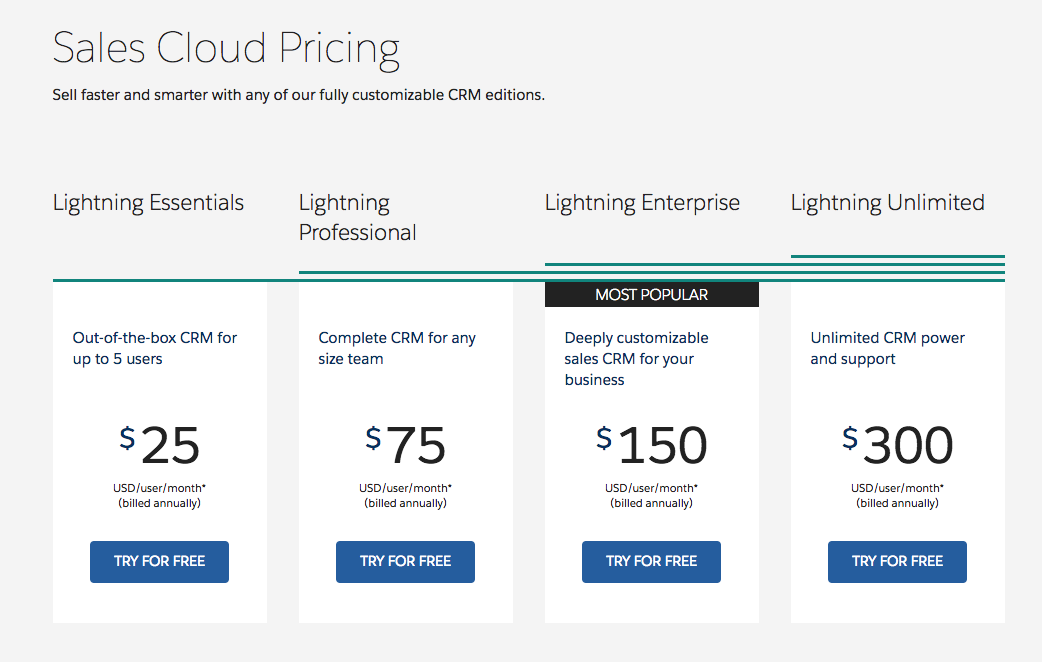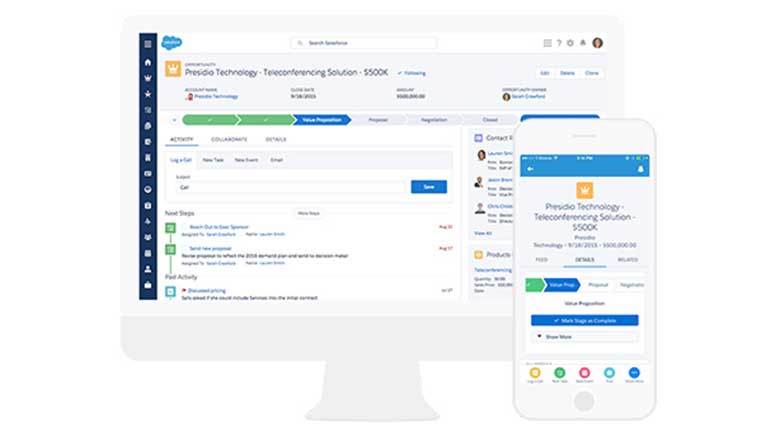how to close the sale
The Changing Role of the Modern Sales Team
Improve Forecasting Accuracy with Salesforce
Getting an accurate sales forecast has always been a problem for businesses. Some forecasters have jokingly said they use a crystal ball to do their forecasts. Mike Wey of Salesforce explained at Dreamforce 2015 that many businesses have ample data to create an accurate forecast, but don’t have the reporting tools necessary. Wey explains the forecasting features of Salesforce including the new capacities of Collaborative Forecasting.
Sometimes companies don’t use the data that can be invaluable in planning the operations of the company, says Wey. Forecasting helps businesses know what the sales team will deliver, what is needed for supply chain, and how to account for it in the finance department.
Wey explains that forecasting has three strong pillars: technology, people, and process. The technology of forecasting is in revenue forecasting software like Salesforce Collaborative Forecasting. In forecasting, says Wey, it is important to get management and sales on board with the CRM forecasting program. Sales is an especially important ally because they are the ones who primarily enter the data. When the sales department enters correct data, the forecast will be more accurate. The third pillar of forecasting is process, says Wey, who recommends checking data from the bottom of the organisation first and then proceeding up through the sales organisation. As a best practice, Wey recommends forecasting weekly and supplementing the forecast with dashboard reports to make sure the pipeline is healthy.
Salesforce Forecasting is strategic planning software, demand planning software, and revenue forecasting software that uses collaborative data to draw the best picture of the company’s future numbers. With Salesforce’s customisable forecasting software, strategic planning for businesses can become data-based rather than a best guess.
Take the Crystal Ball out of Forecasting with Collaborative Sales Forecasting Software
The Collaborative Forecast feature available through Salesforce Sales Cloud allows users to gain a complete, real-time view of team forecasts. This collaborative planning sales forecasting software program allows for real-time, automatic roll ups, quota attainment visibility, collaboration with teams, and multiple forecast types. Salesforce Forecasting is business forecasting software, revenue forecasting software, and demand forecasting software that can be easily customisable to a company’s unique needs.
Salesforce asked for customer feedback on its collaborative sales forecasting software program. According to customer surveys, customers reported 45% improved forecast accuracy. Collaborative planning with data across reps and departments combined has amazing results for forecasting accuracy.
Revenue Forecasting Software from Salesforce Can Run Non-Cumulative and Cumulative Forecasts
There are two methods for forecasting in Salesforce Sales Cloud: non-cumulative and cumulative. Non-cumulative forecasting is based on the separate opportunities and reports “where the deals are sitting,” says Wey. Forecasting in Salesforce that is non-cumulative reports closed, committed, best case, and pipeline numbers separately.
The Summer 2015 Salesforce forecasting rollouts allow for Cumulative Forecast rollups. This is a preference that can be selected based on your revenue forecasting software preferences. Cumulative Forecast from Salesforce is a more robust feature that allows data to be based on an aggregation of forecast categories:
Closed Forecast: includes only closed deals
Commit Forecast: reports both committed deals and closed deals;
Best Case forecast: shows closed sales, committed orders, and best case estimates
Open pipeline: shows all four options along the pipeline
Wey explains that cumulative revenue forecasting gives a more accurate answer to the question, “Based on the opportunities, what will sales most likely deliver?” With the choice to show a cumulative or non-cumulative forecast, the revenue forecasting software from Salesforce allows businesses to choose which forecast will best fit its needs.
Quota Attainment Visibility Through Salesforce Business Forecasting Software
Quotas and attainments are able to be loaded into the Salesforce CRM business forecasting software, allowing more detailed data. Custom fields are allowed to be plugged into Salesforce Forecasting, allowing easy quota attainment visibility and other data. Salesforce forecasting can also sort by product family to show details.
Often, sales are not easy to attribute to just one rep. Salesforce business forecasting software allows revenue split and overlay split, allowing quota attainment visibility to be seen by all reps and managers involved in the sale. Hovering gives detail into the sale in order to accurately forecast by department or branch.
Salesforce Advanced Forecasting Is Customisable and Allows for Problem Solving
A Dreamforce 2015 breakout session featured two Salesforce customers, Pure Storage and Nitro, who customised their Salesforce CRM to fit their forecasting specifications by first defining their exact needs.
Pure Storage found a large portion of their business involved cross-theater revenue splits, a problem solved by Collaborative Forecasting to get the accurate view. For instance, a global account manager will have a personal quota but will also be working with people in-theatre to forecast. Consolidating the forecast was difficult because of the possibility of double-counting sales in the pipeline.
These challenges were solved with Collaborative Forecasting that allowed splits while reporting in a user interface that looked familiar to the team. Comity Designs, a Salesforce partner, helped Pure Storage customise their revenue forecasting software and allow for the data migration and new reports—including a consolidated view upper management required.
“Collaborative forecasting is power,” says Dushyant Pandya, founder of Comity Designs. “Any sale I click, I can know what contributes to it...there’s a lot of number crunching that happens, there’s a lot of interactivity that happens on the same page.” The beauty of collaborative forecasting, continues Pandya, is that it is very easy to build the views your company wants. Because of the way Salesforce is written, customisations are easily attainable.
Nitro, an Australian company that offers the leading replacement to Adobe Acrobat, also uses customised Salesforce Forecasting to solve the problem of matching the exchange rate of their three geographic locations to their NetSuite ERP program. Tom Gadd, the Revenue Operations Manager of the 200-employee company explains how Nitro used the Advanced Currency Management (ACM) feature of Salesforce but wanted the feature to integrate with Collaborative Forecasting. Implementation partners Visual Data Consulting and Redpoint used Custom Field Forecasting (CFF), introduced by Salesforce in Winter 2015 to solve the problem.
As far as problems go, Gadd quips, “keep the solution simple.” The designers hid the custom field based on simple algebraic equations from the sales uses, reasoning that users didn’t need to understand the back end to forecast sales. The solution to Nitro’s complex problem was found in 30 simple lines of code. Nitro’s Salesforce CRM forecasting customisation led to greater adoption of the forecasting module, more accurate forecasting, and quota attainment reporting. Gadd says that being able to have quota attainment reporting was “a holy grail” for him.
Charles Kettering, the innovator and head of research at GM from 1920 to 1947 said, “A problem well-stated is a problem half-solved.” When CRM users are able to articulate the problems keeping them from accurate forecasts, custom forecasting software solutions can be adapted into Salesforce and have a tremendous impact on forecast accuracy.



